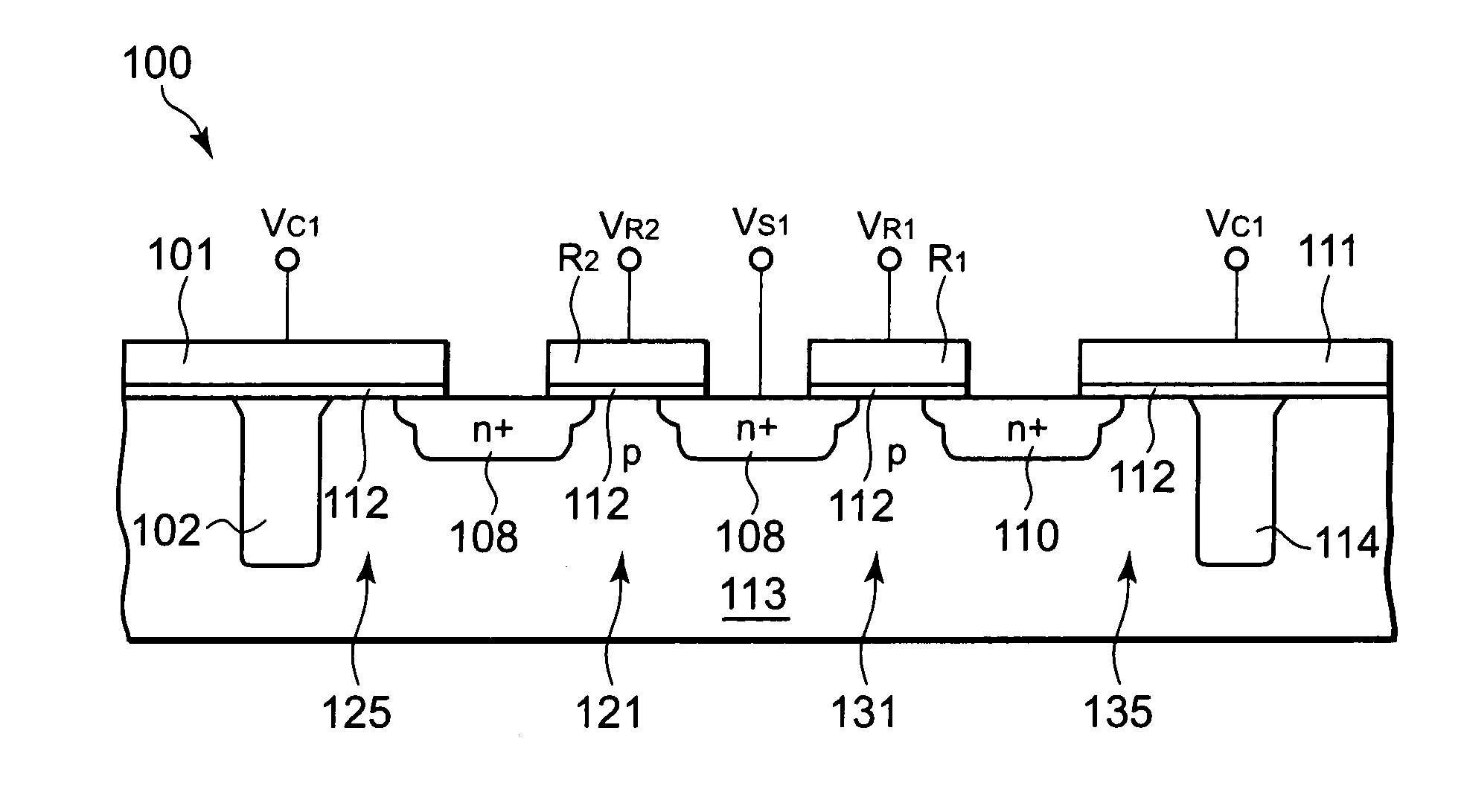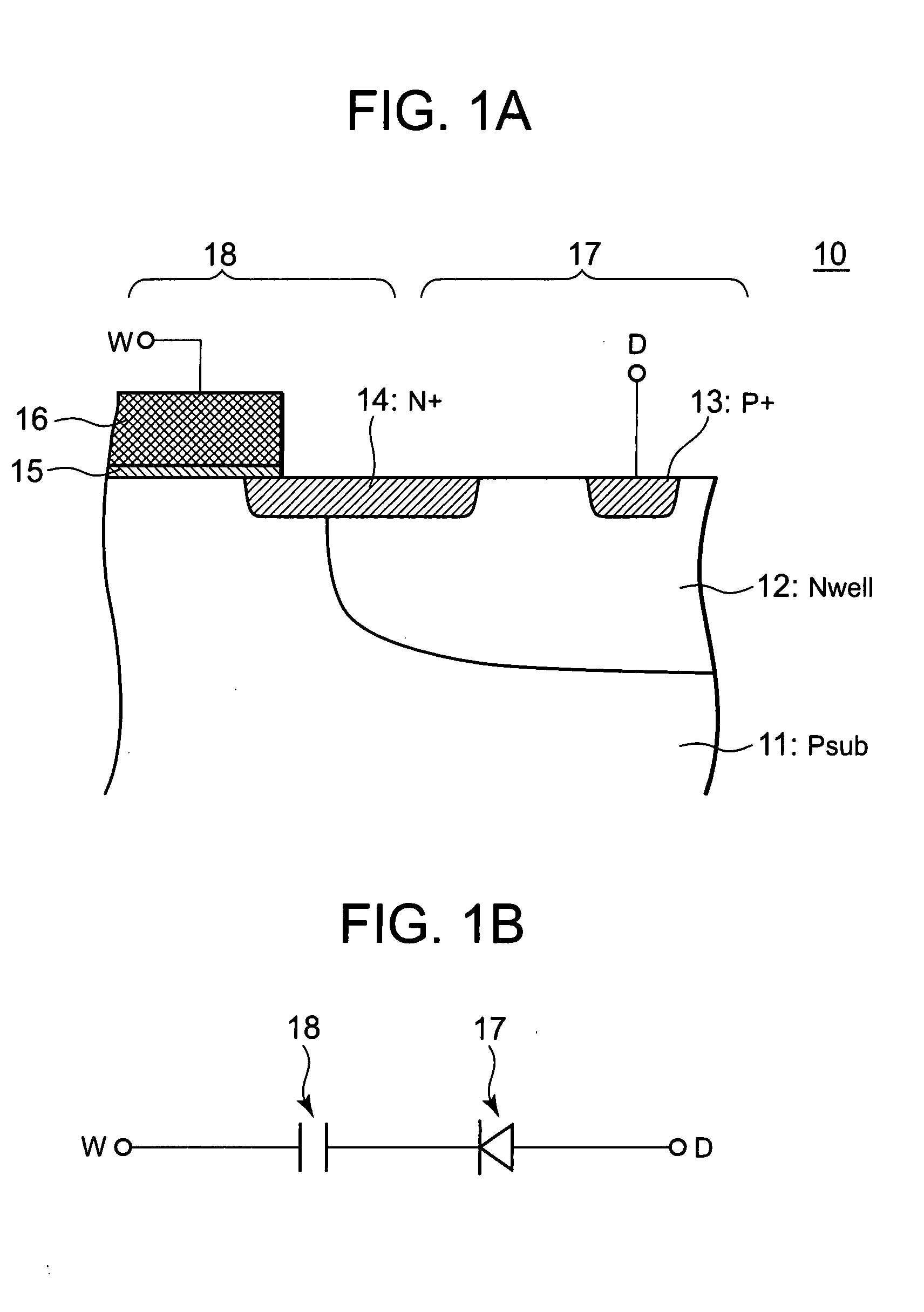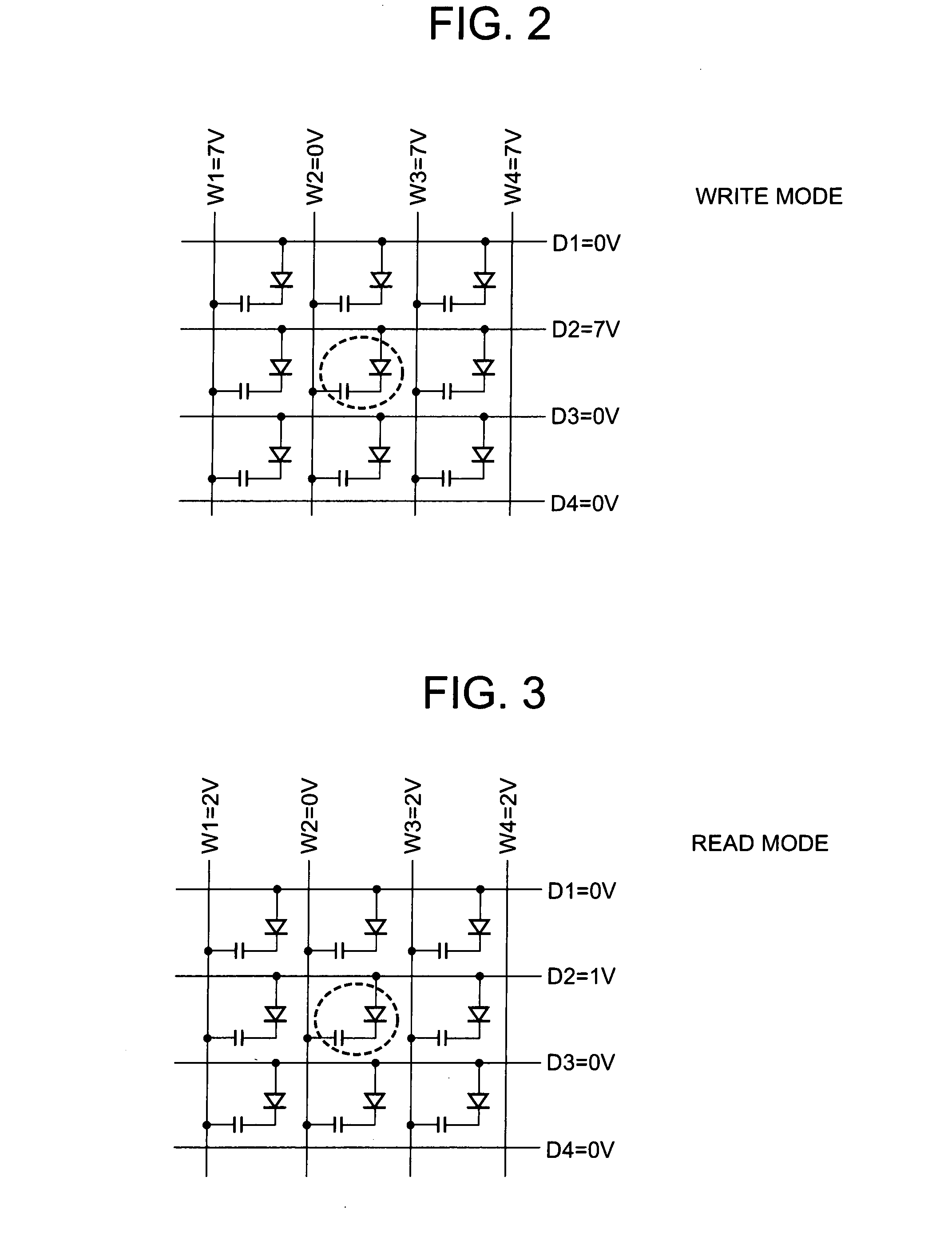Semiconductor memory device
a memory device and semiconductor technology, applied in the direction of semiconductor/solid-state device details, instruments, transistors, etc., can solve the problems of inability to reliably perform write operations, the breakdown voltage of the dielectric film of the anti-fuse, and the inability to raise the junction voltage across the well and the diffusion layer to a sufficiently high voltage, etc., to achieve the effect of reliably performing write operations
- Summary
- Abstract
- Description
- Claims
- Application Information
AI Technical Summary
Benefits of technology
Problems solved by technology
Method used
Image
Examples
first embodiment
[0027]The first embodiment of the semiconductor storage device this invention is described next while referring to the drawings. FIG. 1A is a fragmentary cross sectional view showing the structure of the semiconductor storage device of the first embodiment of this invention. FIG. 1B is a diagram of the equivalent circuit.
[0028]In a semiconductor storage device 10 in FIG. 1A, an N-type well 12 is formed on a specified region of a P-type semiconductor substrate 11. The N-type well 12 conducts in the reverse of the P-type semiconductor substrate 11. A diode 17 serving as the current regulator is formed within the N-type well 12 region. The diode 17 is a diode with a pn junction for the N-type well 12 and a P+ diffusion layer 13. The P+ diffusion layer 13 is the same conducting type as the P-type semiconductor substrate 11 and is electrically connected to a digit line D. An antifuse 18 serving as the memory node is formed on the P-type semiconductor substrate 11. The antifuse 18 is an e...
second embodiment
[0034]The semiconductor storage device for the second embodiment of this invention is described next while referring to the drawings. FIG. 4 is a fragmentary cross sectional view showing the structure of the semiconductor storage device of the second embodiment of this invention. The equivalent circuit is completely identical to the circuit shown in FIG. 1B.
[0035]The semiconductor storage device 20 in FIG. 4 includes an N-type well 22 formed on a specified region of a P type semiconductor substrate 21. The N-type well 22 is the conducts in the reverse of the P type semiconductor substrate 21. An N+ diffusion layer 24 is formed within the N-type well 22 region, as well as a diode 27 serving as the current regulator. The diode 27 is a pn junction diode for the N-type well 22 and P+ diffusion layer 23. The P+ diffusion layer 23 is the same conducting type as the P type semiconductor substrate 21 and is electrically connected to the digit line D. An antifuse 28 serving as the memory nod...
third embodiment
[0038]The semiconductor storage device for the third embodiment of this invention is described next while referring to the drawings. FIG. 5A is a fragmentary cross sectional view showing the structure of the semiconductor storage device of the third embodiment of this invention. FIG. 5B is a diagram of the equivalent circuit.
[0039]A semiconductor storage device 30 in FIG. 5A includes a select transistor serving as the current regulator. In the select transistor 37, the N-type wells 32a, 32b are formed on both side of a P type semiconductor substrate 31 serving as the channel; N+ diffusion layers 34a, 34b serving respectively as the source / drain are formed within N-type well 32a, 32b regions; and a gate electrode 36b is formed via the gate dielectric film 35b on the P type semiconductor substrate 31 serving as the channel. The N-type wells 32a, 32b and the N+ diffusion layers 34a, 34b conduct in the reverse (direction) of the P type semiconductor substrate 31. The antifuse 38 and the...
PUM
 Login to View More
Login to View More Abstract
Description
Claims
Application Information
 Login to View More
Login to View More - R&D
- Intellectual Property
- Life Sciences
- Materials
- Tech Scout
- Unparalleled Data Quality
- Higher Quality Content
- 60% Fewer Hallucinations
Browse by: Latest US Patents, China's latest patents, Technical Efficacy Thesaurus, Application Domain, Technology Topic, Popular Technical Reports.
© 2025 PatSnap. All rights reserved.Legal|Privacy policy|Modern Slavery Act Transparency Statement|Sitemap|About US| Contact US: help@patsnap.com



